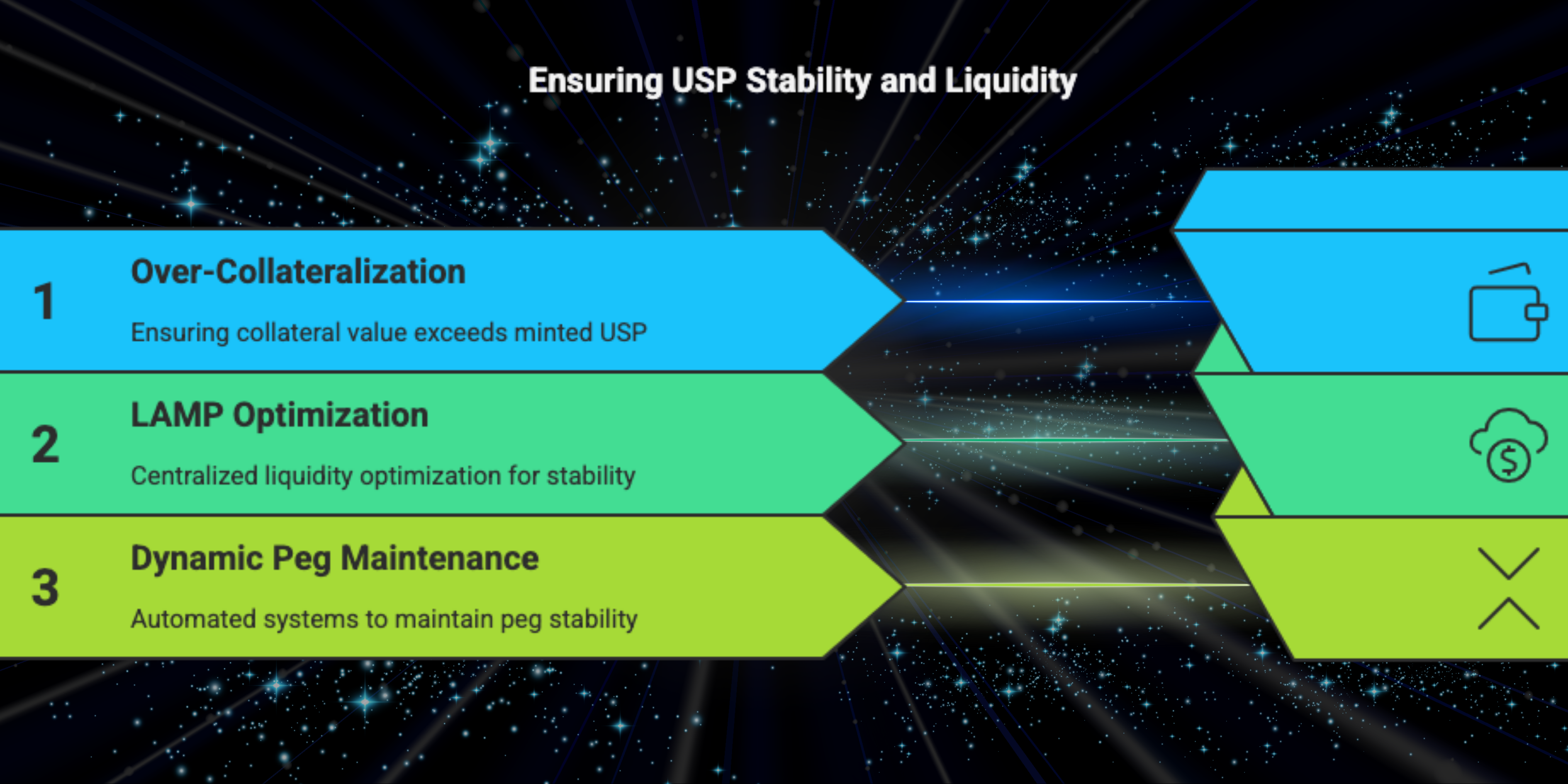STBL: USST Stability & Liquidity

STBL ensures USST stability and liquidity through a reserve-backed treasury model utilizing tokenized real-world assets (RWAs) such as U.S. Treasury Bills. These assets serve as collateral, guaranteeing that every USST stablecoin issued is fully backed and preventing supply imbalances.
Collateral-Backed Security
- USST maintains a $1.00 peg, backed by verifiable RWAs rather than relying on fractional reserves like centralized stablecoins.
- The protocol employs an over-collateralization model, ensuring the collateral value exceeds the amount of USST minted to mitigate risks.
- The over-collateralization ratio (R) is calculated based on a volatility model of the RWAs, ensuring stability even in adverse market conditions.
- The Liquidity and Minting Pool (LAMP) acts as a centralized liquidity optimizer that enhances capital efficiency and price stability. It ensures USST is always distributed at a fixed price of $1.00, mitigating the risk of USST deviating from its intended peg.
Role of LAMP in Treasury Stability
The LAMP mechanism plays a critical role in:
- Providing immediate liquidity while maintaining a tight price peg for USST.
- Enabling users to allocate USST and YLD tokens for staking and earning governance rewards in USST.
- Allowing users to contribute to USST liquidity pools, ensuring constant market demand.
- Additionally, users who stake USST into the LAMP earn USST rewards, incentivizing long-term protocol participation.
Dynamic Peg Stability & Market Protection
To prevent USST from falling below $1.00, STBL integrates:
- An automated price moderation system within LAMP that dynamically adjusts USST issuance to maintain stability.
- Liquidity bootstrapping, ensuring USST supply remains equally distributed across lending protocols and decentralized exchanges (DEXs).